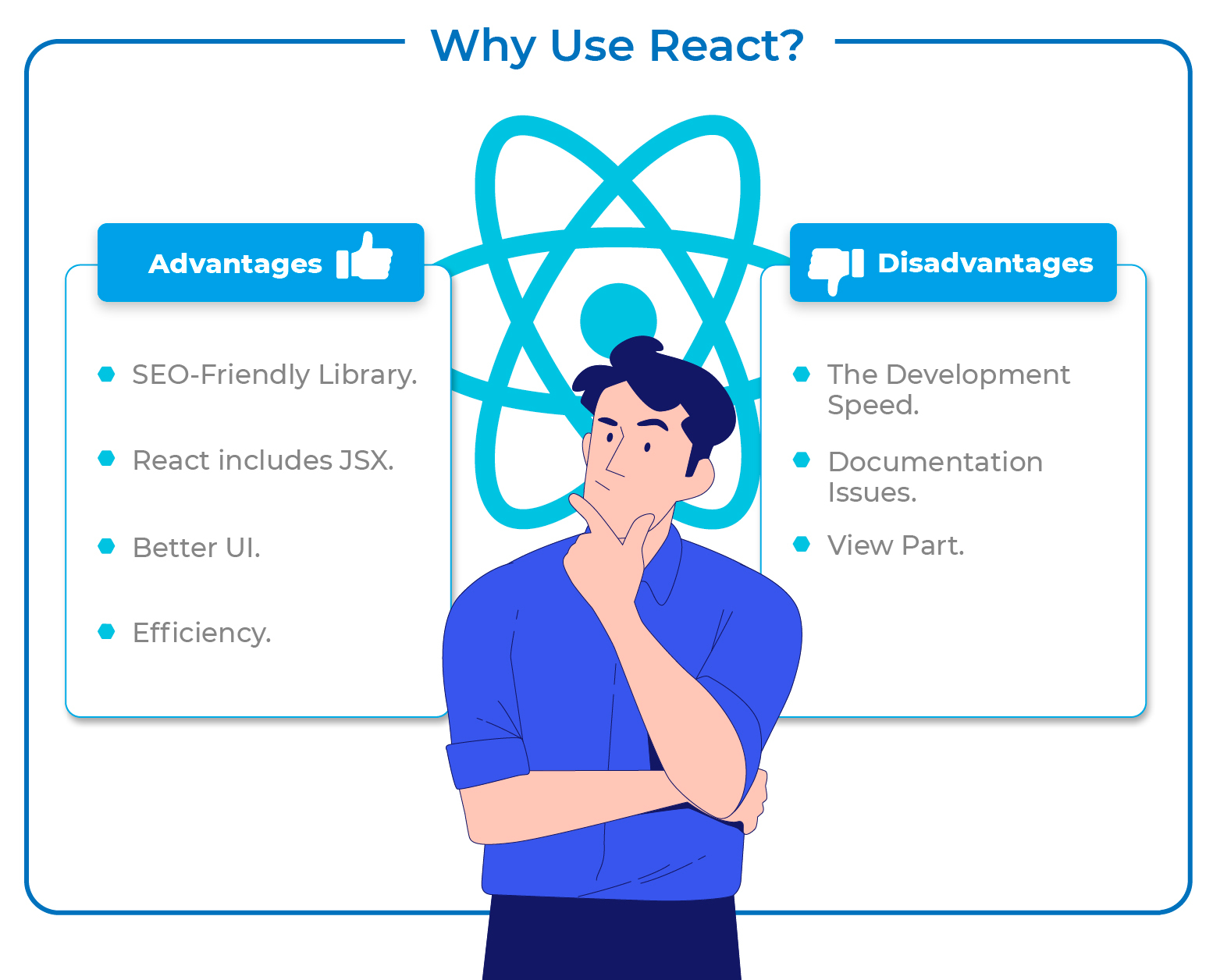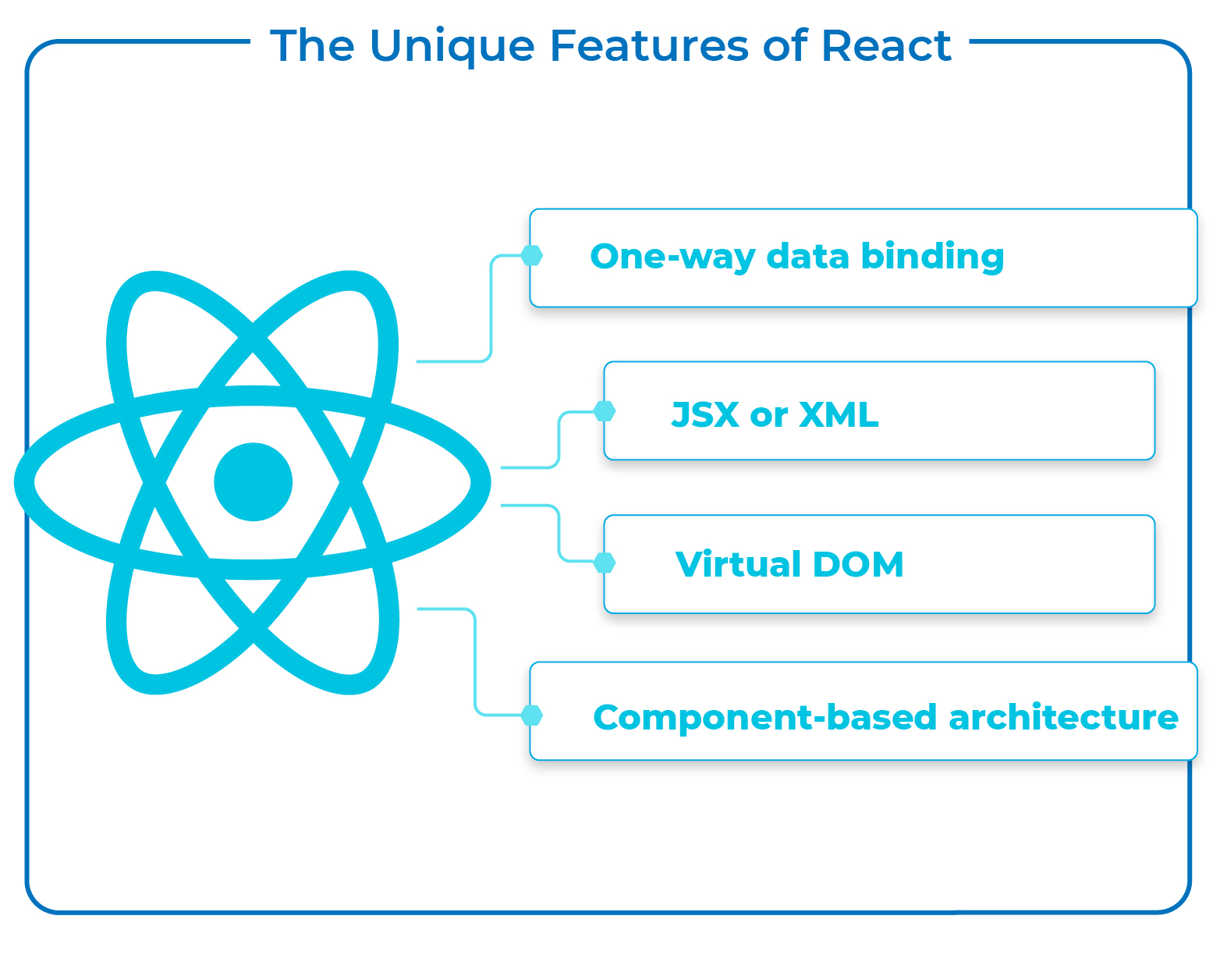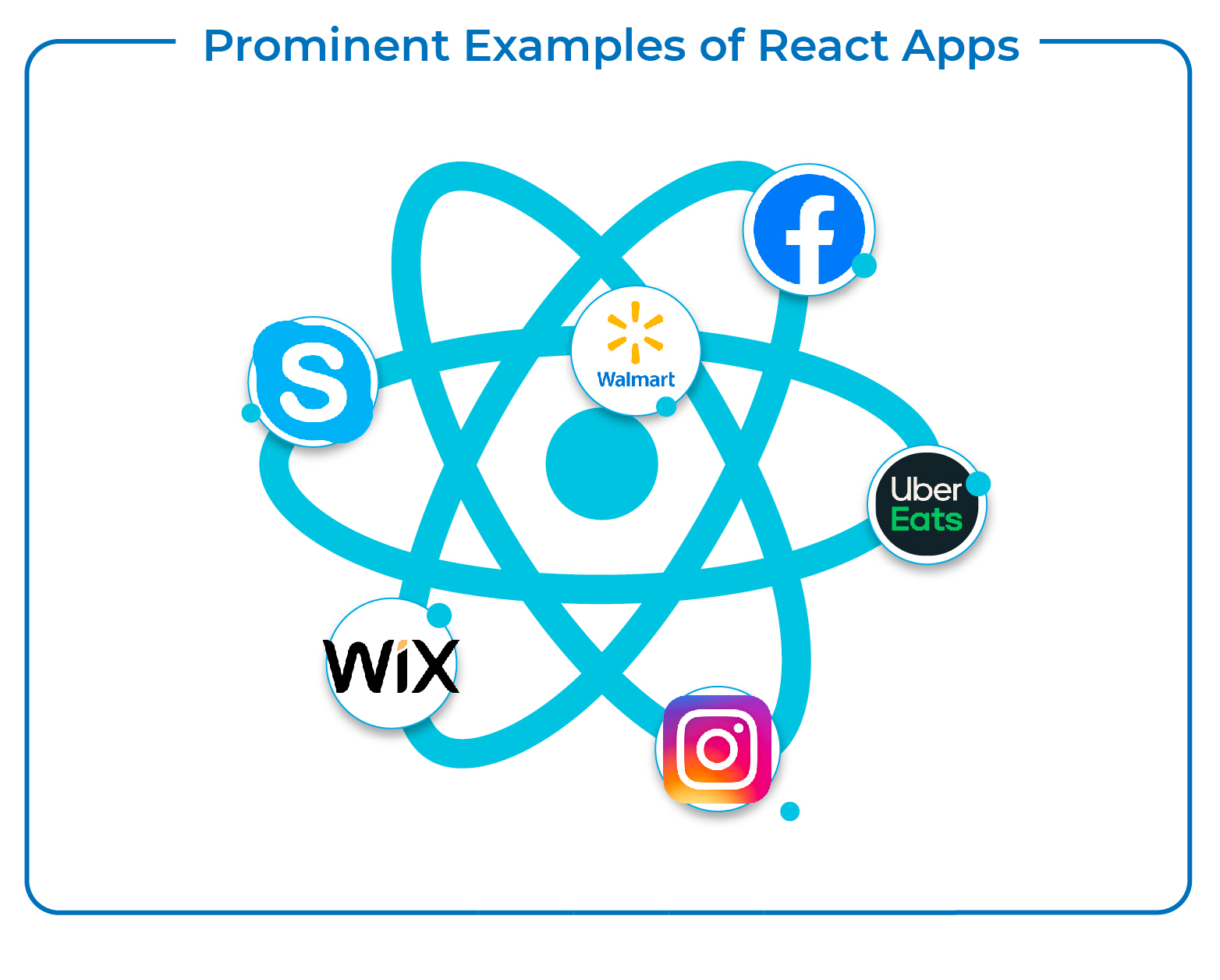Top 8 Real-Life React Apps Examples
React is one of the best choices for web- or mobile-based applications used by top enterprise apps like Facebook, Walmart, and Instagram.
Join the DZone community and get the full member experience.
Join For FreeThe continuous evolution of the front-end development ecosystem makes it difficult for business owners to choose a framework. With React app examples, it might be easier to make a good choice that resonates with their needs. Some businesses choose Angular by default but have no clue whether it is appropriate or not. So, let’s take a look at examples of websites created by prominent companies like Facebook and Uber that use React and React Native.
What Is React?
React is a UI development library written in JavaScript. Facebook administers it along with an open-source developer community. According to a developer’s survey results, React achieved the first position and beat most of the front-end development frameworks.
React is user-friendly and supports developers who want to go creative with their front-end development. It is also a combination of JavaScript and HTML tags, considered the best in the space.
Beyond the UI, React includes various supporting tools that complete component architecture, such as Redux and Babel.
Why Use React?
When businesses choose React for their front-end development projects, they see several benefits. The benefits also justify the selection of React as a framework by the eight prominent companies we will talk about in the following sections. Let’s review a few of these benefits:
- SEO-friendly library: Search engine optimization is critical to the success of any online company. According to Moz, the quicker a website loads and the more quickly an app renders, the better the app will rank on Google. Due to its quick rendering, React dramatically decreases website load time compared to other frameworks, which notably aids companies in attaining the top spot on Google’s search engine results page.
- JSX: React includes JSX, an optional syntactic extension that enables the creation of custom components. These components effectively support HTML quoting and also make subcomponent rendering a joy for developers. Though there have been several disputes over JSX, it has already been used for bespoke component development, high-volume application development, and turning HTML mockups to React element trees.
- Better UI: The quality of an application’s user interface is critical. If the UI is not designed well, the likelihood of a program succeeding decreases. React’s declarative components enable the creation of high-quality, rich user interfaces, which leads us to our next point.
- Efficiency: React has a virtual DOM for storing the components. This method provides developers with unprecedented flexibility and performance improvements since React anticipates which changes to make to the virtual DOM and updates the DOM trees appropriately.

A Few Disadvantages of React
It’s worth noting that there are some issues developers find hard to tackle in React:
- The development speed: Rapid progress can bring both advantages and disadvantages. Since the environment is always changing, some developers may not feel comfortable relearning new methods of doing things frequently.
- Documentation issues: This is another disadvantage associated with rapidly evolving technology. React technologies are evolving and developing at a breakneck pace, leaving little time for appropriate documentation.
- View part: React is limited to the application’s UI layers. As a result, you have to choose a few other UI frameworks like React.bootstrap, Material UI, CSS Grids, or Flexbox to have a comprehensive UI development.
Many business owners don’t see the above drawbacks as obstacles to their development projects. So, before diving into React app examples, let’s check out why React can be a better choice than other frameworks.
The Unique Features of React
React features a few unique elements that make it stand out from the crowd of other JS-based frameworks:
- Virtual DOM: This feature of React contributes to the development process’s speed and flexibility. The method enables the virtual memory of React to replicate a web page. Whenever an app is edited or updated, the virtual DOM recreates the complete UI by updating all the customized components. This significantly decreases the time and expense associated with development.
- JSX or XML: It is a markup syntax for describing the look of an application’s interface. It converts the syntax to HTML, and developers use it to generate React components. JSX is one of the best aspects of ReactJS since it simplifies the process of developing building pieces.
- One-way data binding: This implies that React employs a unidirectional data flow, requiring developers to change components through the callback features and prohibiting them from altering them directly. Controlling data flow from a single location is accomplished using an element of the JS app called Flux. It gives developers greater control over the software, increasing its flexibility and effectiveness.
- Component-based architecture: React.js is a component-based framework. In other words, a React-based web application’s user interface is composed of several components. Every component has its own logic, so rather than utilizing templates, the logic is written in JavaScript. This allows developers of React applications to transfer data throughout the application without altering the DOM.

While the above unique features can prove effective against most other web development frameworks, it is important to learn a few use cases of React.
8 Prominent Examples of React Apps
The most prominent application of React is for cross-platform app development. We also find React development examples in the web development and mobile app development spaces.
Here are different categories of eight applicable React app examples.
Software as a Service (SAAS) Apps
1. React App Example: Walmart
Walmart is an international retail corporation based in the U.S. with a global network of 11,000 supermarkets. Their React-based software provides a frictionless online shopping experience, product search, and in-store pricing comparison.
Developers say that React Native enabled the reuse of about 95% of the code base across the two platforms. Moreover, they only needed a single team of JavaScript developers to complete the job. Walmart’s objective was to target many platforms without creating additional code and grow its user base beyond iOS.
According to Walmart, the primary advantage of collaborating as a React Native app example is the opportunity to employ the same automation suite across both platforms. It helps increase the speed of the apps on both iOS and Android platforms.
Also, it aided them in gaining greater control over the announcement of update release dates. Along with boosting performance, another objective was to improve the client experience.
2 . React App Example: Uber Eats
Uber Eats is an example of a React Native app. A meal delivery service and an extension of Uber’s original ride-hailing business. It is an on-demand online food delivery service that operates as a mediator between you and restaurants, delivering take-out from independent and chain restaurants directly to your home.
React Native provided the development team with outstanding knowledge and features for react native app development, which aided in enhancing the user experience. Even though React Native only makes up a tiny percentage of UberEats’ vast technological stack, functioning from behind, its contribution is noteworthy.
It introduced the most significant modifications in the Restaurant Dashboard overhaul. It has empowered, streamlined, and enhanced the responsiveness of this operational component. This framework undoubtedly increased the capacity of the app without increasing its complexity by joining web and mobile development together.
3. React App Example: Wix
Wix is a very popular cloud-based website builder service and is a React Native app example. Wix enables consumers to create websites without requiring them to possess specialized expertise or employ web experts. The sites are mobile-friendly and can be quickly constructed, updated, and managed via the Wix website. Whatever the user’s level of expertise, Wix provides a solution for developing sites.
React has helped Wix deal with obstacles associated with early adaptation and stay on track, providing agility to the development process, which is easier to conduct. Other than that, contributing to the core project of the React Native app while also maintaining the fork for critical fixes has been possible.
Implementation of React has also made it possible to create other projects like react-native-navigation, react-native-notifications, react-native-UI-lib, and react-native-calendars, which are all still active and growing daily.
Chat Apps
4. React App Example: Facebook
Facebook is a social networking platform that enables you to interact with and share information with family and friends. Initially intended for college students, Facebook was founded by Mark Zuckerberg in 2004. By 2006, Facebook was open to anybody over the age of 13 with a verified email address. Today, Facebook is the most important social networking platform globally, with over 1 billion members.
Although only in part, Facebook uses React, and their website is designed using React, a scripting language that is integrated into the application’s code. The mobile application is also constructed using React Native, which is similar to React but is responsible for displaying native iOS and Android components rather than DOM elements.
Interestingly, Facebook is where the React library was born, so the app is a prime React app example. Facebook has launched a beta version of React Fiber, a totally redesigned React.
5. React App Example: Skype
Skype, a cloud-based audio and video communications service that allows users to make and receive free voice and video conversations via the internet using a web browser, computer, or mobile phone, is another react app example. VoIP offers communication that is not reliant on traditional landlines or cellular plans.
The corporation carried over virtually all of the features from the previous version of Skype and added a slew of new ones. Microsoft, for example, has incorporated Giphy, which enables users to exchange animated GIF files during discussions.
6. React App Example: Instagram
Instagram, a social networking site focused on picture and video sharing, is also a React app example. It was first released for iPhone and then Android. Facebook acquired the service in April 2012 and has retained ownership since then.
Instagram makes extensive use of React. Numerous elements, such as Google Maps APIs, geolocations, search engine accuracy, and tags that appear without hashtags, attest to this. About 90% of the code is shared between iOS and Android platforms. Instagram is built entirely on React technology, which has allowed users to adapt quickly to its incredible features and deliver products swiftly.
Healthcare Apps
7. React App Example: Gyroscope
Gyroscope is a smartphone application that integrates with Apple Health to give personalized health dashboards and coaching based on your data. Utilize your Apple Watch and in-app monitoring to be informed of every activity.
Gyroscope grants access to the device’s gyroscope sensor, which detects rotational shifts in three-dimensional space. The software, which was built using React, provides users with several unique benefits, such as interacting with the data manually or digitally, and all data may be consolidated on a monthly, annual, or even weekly basis.
FinTech Apps
8. React App Example: Facebook Ads
Facebook Ads are only available on the Facebook advertising platform. They may be displayed in the news feed of Facebook, in Messenger, and even on non-Facebook applications and websites. They are available in several formats—single picture, video, slideshow, and more—and may be customized to reach incredibly particular populations.
Facebook is not the company’s sole React Native app; Facebook Ads was the company’s first React Native application on Android and the first cross-platform React Native app example.
The program is lightning quick, regardless of the operations you choose to do; from monitoring the success of an existing campaign to launching a new one, it takes no more than a second or two to go to the next level or access data.

Conclusion
There is no question that React is one of the best choices for developing web- or mobile-based applications. However, for many businesses, it’s difficult to decide which framework will work best for their platforms.
So, when we see React apps or React Native app examples of top enterprises like Facebook, Walmart, and Instagram, it makes sense to adopt similar frameworks for your development needs.
Published at DZone with permission of Alfonso Valdes. See the original article here.
Opinions expressed by DZone contributors are their own.

Comments